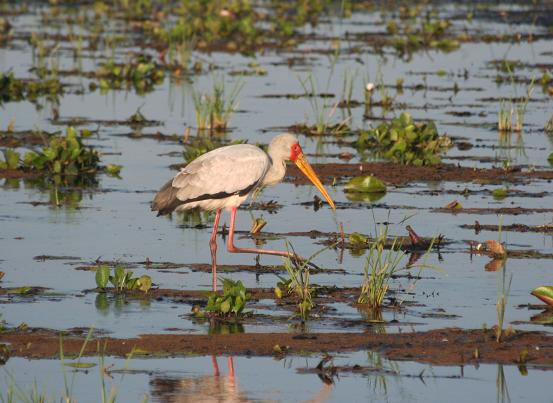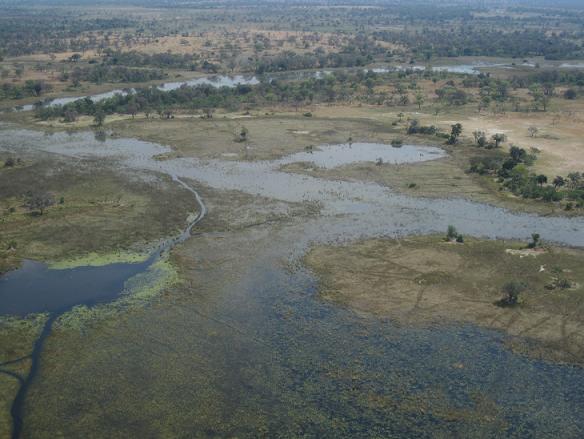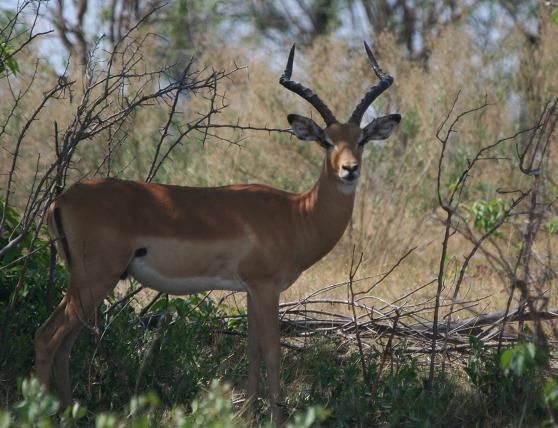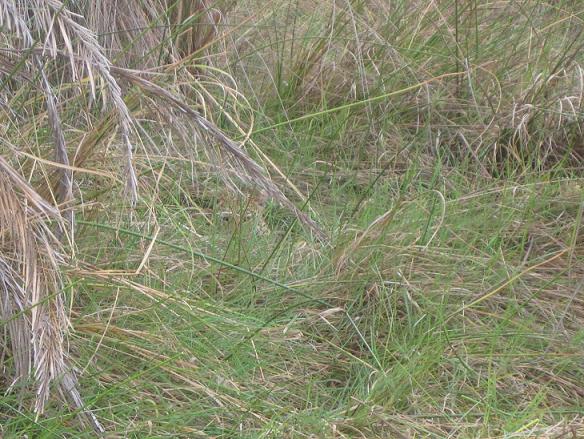The Channel
Wednesday, December 26th, 2012To reach our next stop in Botswana, we headed out to an airstrip and were picked up by one of many Cessna 4-seaters that ferry passengers back and forth between the remote safari camps. This one made a few stops enroute dropping off and picking up guests, staff, and supplies as it went along. Our destination was the Savute Elephant Camp, a very comfortable and posh “camp” just outside the entrance to the national park. The Savute area is actually in the western part of the larger Chobe National Park, but the differences in landscape make it interesting enough to warrant a separate visit.
The area is dominated by the Savute Channel, which is a strange river that has flowed and stopped intermittently over the last few hundred years. It flowed from the late 60’s until 1982 when it mysteriously dried up. Then in 2010 it suddenly starting flowing again. It’s hard to imagine now what it must have looked like just a few years ago. The river makes an excellent place to watch elephants as they come to drink and cool off, but it also creates an interesting marsh where there are unbelievable amounts of water birds too.
The camp itself itself is privately run and very luxurious. Our “tent” had glass doors, electric lights, and even air conditioning during the day. The game drives were similar to our previous experience in that they were held twice a day and interspersed with a lot of good food. The only difference was that we had to be out of the park by about 7pm each night because it is part of the national park system.
The big (literally) attraction here is the elephants. There are thousands of them moving around in small family groups, or sometimes solitary males who can be dangerous. We watched a group of about 20 elephants of all sizes approaching the river from the other side of the bank. They walked slowly in a single file line until the river came into view. At that moment they all broke into a run and went splashing into the water. It was amazing to watch these thirsty, tired animals drink and drink and drink.
It’s hard to explain how big the elephants are, and how close they actually get to you. The safari truck gives you a sense of protection and power, until one walks toward it and you realizes that it is bigger, staring right at you, and doing what they call a “mock charge” (flapping ears and stomping feet). No matter how many elephants we saw, I couldn’t get enough. If the guide hadn’t pulled us away, I would have stayed and watched them for hours.
It’s good that the guides do push you on however, because there are a lot of other incredible sights. Savute also gave us our first view of male lions. Although they are powerful and intimidating, we saw them most often sleeping, flopped under a tree avoiding the heat of the day. We spotted one on a morning drive and then again in the afternoon. The only movement he had made in 6 hours was to follow the shade about 10 feet from one side of the tree to the other. It’s good be the king.
The elephant bar:

A rare “awake” moment:
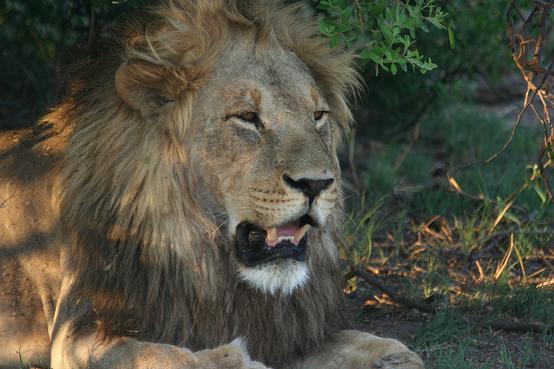
The birds don’t get as much attention as the big game, but some like this stork are just as beautiful:
